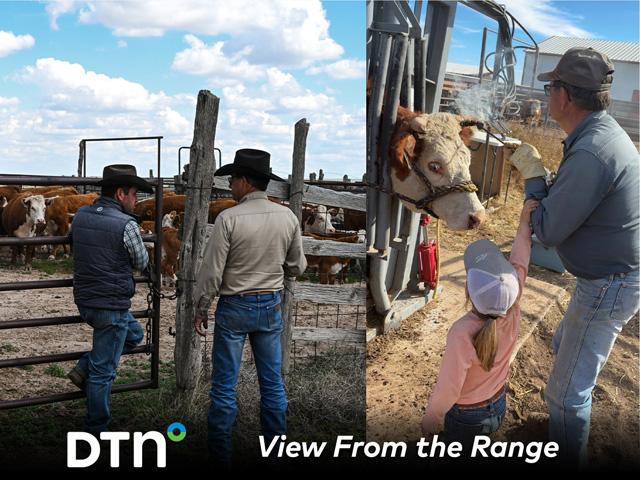Call the Market
How the Marketing Structure of Beef is Failing Some Producers
In 2019, I accepted a livestock market analyst position with DTN and suited up for what became known as some of the wildest times in the cattle market's history. From packing plant fires to a global pandemic, to shutdown processing plants to record boxed beef prices, and now to record-breaking beef cow slaughter speeds and another turn in the market's cycle -- the market never ceases to amaze me. I'm thankful that the market's tone has shifted from a depressed, bruised and beaten state, to a stronger, more optimistic tone as 2022's early feeder cattle sales have demanded everyone's attention.
Unfortunately, the cattle market seems to be on a nonstop roller coaster ride of drastic swings that take producers from feast to famine; the feasts only seem to last a year or two while the famine drags on for the remaining eight to nine years of a cycle's course.
That makes it more important to be ready to capitalize on the market when it's strong, and be safe-guarded and well positioned to outplay the market when it's weak.
During the 21st century, elaborate marketing campaigns have been created to drive sales higher. Some of those have been good and beneficial, while others are just plain intrusive and uncanny. For example, heaven forbid you happen to mention to your spouse that you'd like a new grill for the summer because, from pop-up ads on Google to random ads on social media, grills are all you're going to see!
However, one marketing campaign that's built true demand and grown substantial wealth throughout its organization is Certified Angus Beef (CAB). If you walk into a high-end restaurant and view their displayed cuts, it's without a doubt that CAB cuts will be exhibited front and center, as they have been marketed to be the country's best and finest cuts of beef.
P[L1] D[0x0] M[300x250] OOP[F] ADUNIT[] T[]
All this marketing hasn't gone without substantial premiums being paid for such meat; on average, CAB choice cuts are worth $15 to $20 per hundredweight more than regular choice cuts, which equates to roughly $130 per head more in premiums. And with those prices, who wouldn't want to raise black-hided cattle!
While perhaps many people who sank their teeth into a savory steak have heard of Certified Angus Beef, understanding the qualification for its stamp may be worth noting.
First, all beef that is to be considered for the brand must be the best choice, or prime beef, and then must again pass 10 specifications for marbling, size and uniformity. For marbling and maturity, the meat must: 1) be modest or higher for marbling to ensure consumer satisfaction, 2) be medium to fine in marbling texture, which ensures consistent flavor, and 3) can only be cattle killed younger than 30 months of age and only A-maturity lean for superior color, texture and tenderness.
For consistent sizing, 4) the meat must possess a 10- to 16-square-inch ribeye area, 5) hang a 1,050-pound hot carcass weight or less, and 6) have 1-inch-or-less fat thickness.
For quality appearance and tenderness, 7) the meat must be superior in muscling which excludes light-muscled cattle, 8) be practically free of capillary rupture which ensures visual appealing steaks, 9) cannot be a dark cutter, and 10) may not have a neck hump exceeds 2 inches.
No one would argue that these specifications don't deserve some praise for the genetics chosen and the way the animal was grown. Therefore, premiums are undeniably deserved.
But what about the cattle that jump through all these hoops, are equal in terms of product quality, but don't get the CAB stamp and miss out on the $15 to $20 per hundredweight premiums?
Ken Betschart, a marketing representative for Consolidated Beed Producers, said it best. "The real kicker of this marketing strategy that goes untalked about is that the upper two-thirds of choice cuts are choice no matter the animal's color. It's as if all other cattle who jump through these hoops and meet the industry's standard for excellence are treated as the red-headed stepchild of the group, whether they be red, white or any other color than black-hided cattle," he said. "There is product out there that is just as consumable, just as good as CAB, but that product doesn't have the same marketing structure behind it. We have deemed CAB a 'better' product, but isn't a choice cut a choice cut no matter how you look at it?"
You can't fault the creators of CAB for being the marketing masterminds that they are, but you can look at other breed associations and wonder why they haven't upped their own game to help their producers better market their cattle.
"My line of work always comes down to the producer. I want to help them market their cattle to the best of my ability so that more of the market's dollar can become their own. I have no problem with what CAB has done, I just wish other groups would follow their lead so that more producers could get paid similar premiums for the trusted product that they raise," Betschart shared.
Breed associations aren't shy about asking their members to renew their dues, and while it takes a hefty dollar to fund such groups, at some point we must stop and ask ourselves if the dollars spent are helping producers generate more revenue? Because in a cycle where only one to two years are comparable to a feast, producers need all the help they can get to make it through the years of famine.
ShayLe Stewart can be reached at ShayLe.Stewart@dtn.com
(c) Copyright 2022 DTN, LLC. All rights reserved.





